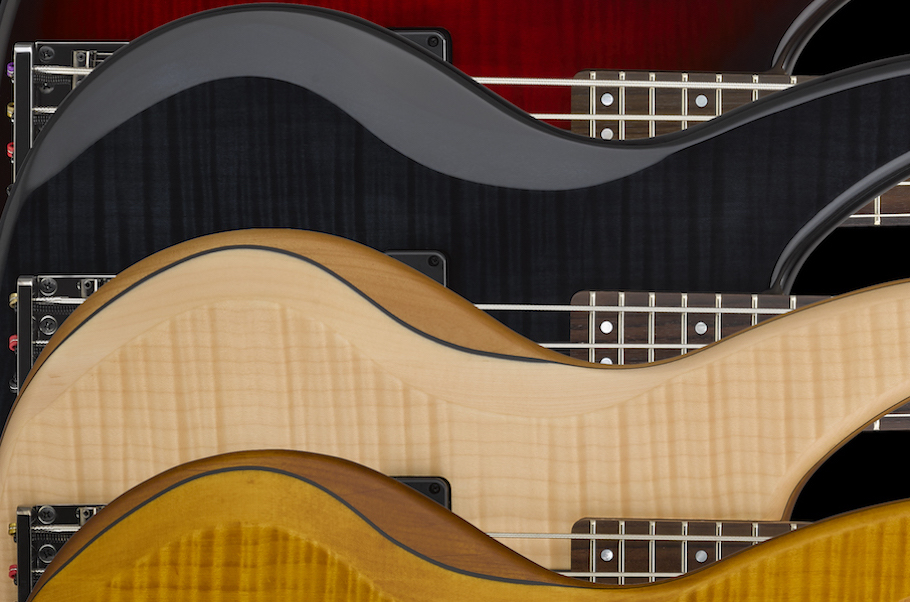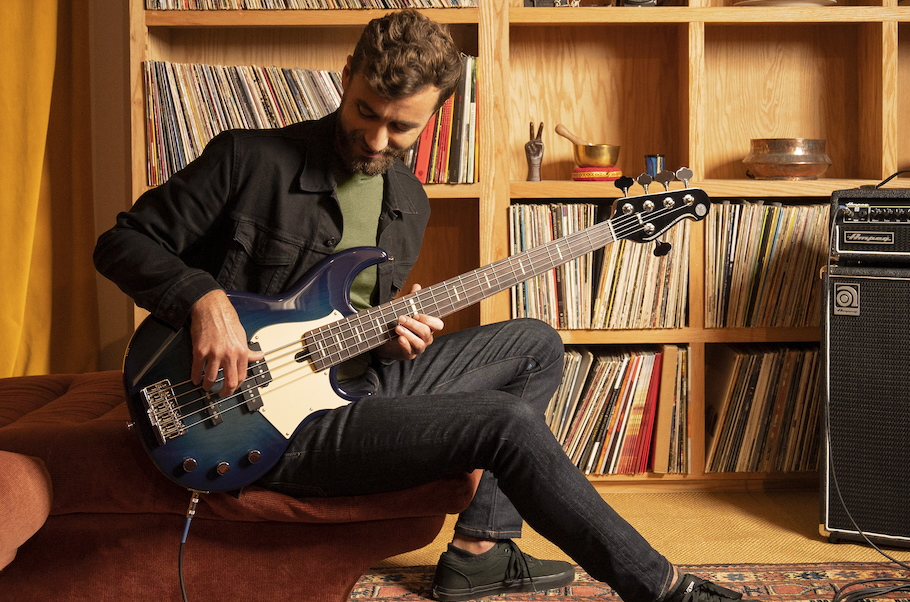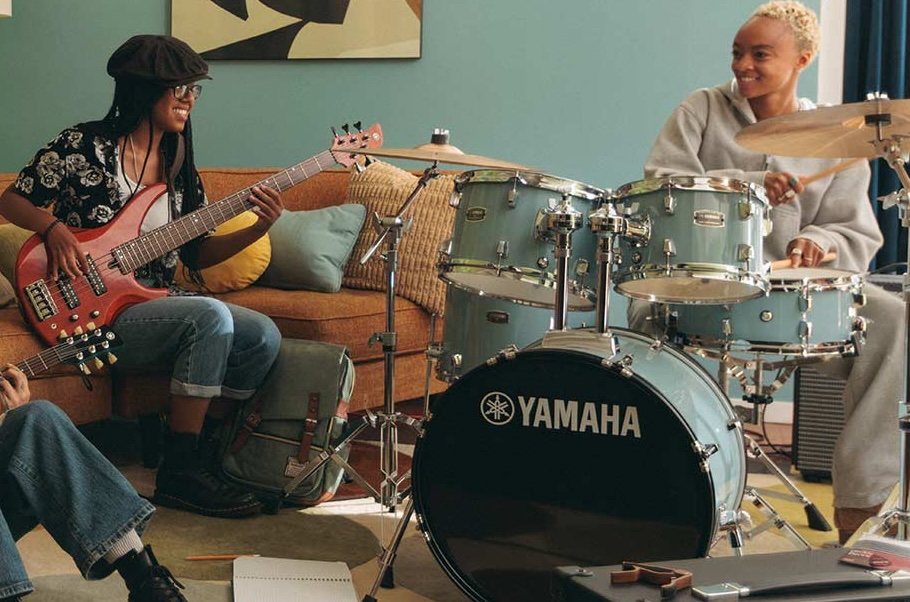How to Choose a Bass Amp
A brief guide to amplifying your bass.
You’re happy with your bass, you’re getting great tone in your headphones, your regular practice sessions are showing results, and you’re ready to throw down with a drummer. The next step? An amp that’ll bring your bass lines to life.
In a world full of digital audio workstations, in-ear monitors, and clubs and rehearsal studios that provide “backline” amps of their own, you might wonder whether it’s worth investing in your own rig. The answer is almost certainly yes! In fact, learning how to sculpt the sound of an amplifier — the last part of your signal chain and a crucial factor in your bass tone — is just as important as choosing the right instrument and strings. Although in-ear monitors are more common than they used to be, they’re not as ubiquitous as amps; you never know when you’ll be asked to bring your own rig, so understanding how to get “your sound” makes all the difference when you encounter an amp you’ve never seen before.
BASS AMP BASICS
When we use the term “bass amp,” we’re usually talking about the combination of a preamp for tone control, a power amp that amplifies the signal, and a speaker inside a cabinet. Although some musicians prefer separate power amp and preamp units, many modern bass amps combine both elements into a “head.” A “combo” brings together a head, speaker and cabinet in one unit.
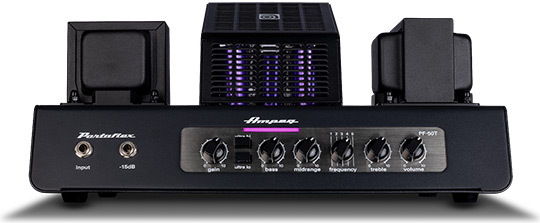

If you’re in the market for a head, you’ll notice the distinction between tube amps (renowned for their “warm” old-school sound and desirable distortion), solid-state amps (lighter, smaller and less expensive than tube amps) and hybrids, which combine tube preamps and solid-state power amps.
An amp’s power is expressed in watts. For most rehearsals and gigs, a 50-watt amp is underpowered, a 300-watt amp gets the job done, and a 1,000-watt amp is overkill. (In general, tube amps are louder than solid-state amps with similar power ratings.) If you buy a separate head and cabinet, you’ll have to make sure the speaker’s impedance, measured in ohms, meets the minimum impedance listed on the head. If you don’t have enough ohms, you risk frying your amp.
We refer to bass speakers and cabinets, known together as “cabs,” by the size of the speaker. Cabs come in several different sizes (usually between 10″ and 18″) and in many different combinations, where the first number denotes how many speakers there are and the second number denotes their size. The most common combinations are 1 x 10 (one 10″ speaker), 1 x 12, 1 x 15, 2 x 10, 4 x 10, 6 x 10 and 8 x 10. Many bass cabinets are also equipped with a tweeter, a small speaker focused on reproducing high-frequency sounds. It can be useful to think of speaker sizes in terms of low end and definition; generally speaking, bigger speakers have more bottom, while smaller speakers have more detail. Many players experiment with various combinations to get the sound they want.
Beyond these basics is a universe of options. Some amps have onboard effects such as compression; others use software to model various tones; many have built-in XLR direct outputs; and a few have more than one channel so you can quickly switch between two different tones, which is useful if you play both electric and upright bass, for example.
WHICH AMP IS RIGHT FOR YOU?
Here are some questions that can help you decide which amp is right for you:
- How do you want to use your amp? Is it for low-power practice sessions or rehearsals and live gigs with a drummer? Do you also want to use it for recording?
- What kind of tone do you prefer? Most modern amps are quite versatile, but a particular amp’s inherent tone may be closer (or farther) to your ideal tone than another.
- How much power do you need? If you’re in a four-piece metal band, you’ll need more wattage than someone who plays with singer-songwriters or in a piano trio.
- How important is portability? Bass amps usually weigh more than guitar or keyboard amps, and back in the day, “louder” equaled “heavier.” Thankfully, many of today’s lightweight heads, speakers and combos deliver plenty of volume.
- What’s your budget? Many manufacturers offer models at both ends of the affordable-to-aspirational spectrum, but research and patience can put an expensive amp within reach.
Once you’re clear on your needs, you can jump into shopping mode.
LET’S GET READY TO RUMBLE
If you’re ready to buy an amp but are stumped about where to begin, learn what your favorite bass players use, and notice what amps you see and hear at shows. Ampeg™ is a well-known company that has been offering a wide variety of much-loved bass amps for more than a half-century, including the iconic B-15 combo (which you can recreate by combining a modern-day Ampeg PF-50T Portaflex tube head with a 1 x 15 PF-115LF Portaflex cabinet), augmented by modern-day models such as the compact Micro Series and versatile Rocket Bass combos. Browsing YouTube and reading reviews are also great ways to begin understanding the pros and cons of any amp you’re thinking of buying.
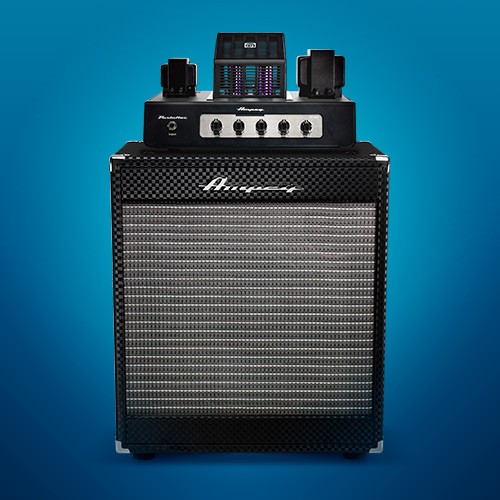
But nothing compares to trying out amps at a music store. If you can, play your bass (not one hanging on the wall) through every rig you’re considering so you can see how they sound together. How easy is it for you to get the tone you want? Are the amp’s controls easy to navigate? Then have a friend play while you stand a few feet away and listen. Pick up the amp and imagine carrying it upstairs or loading into a club. Are the switches and knobs solid? Do the wheels work well? If the amp meets or surpasses your expectations, it may be time to take it home.
In many ways, we live in the golden age of bass amplification. Today’s rigs are the lightest and most powerful they’ve ever been, and the overall standard has risen considerably since the birth of the bass amp back in the 1950s. It’s an amazing time to be a bass player, so plug in, tune up, turn up and let it rumble!
Photos: Jesper Van.











